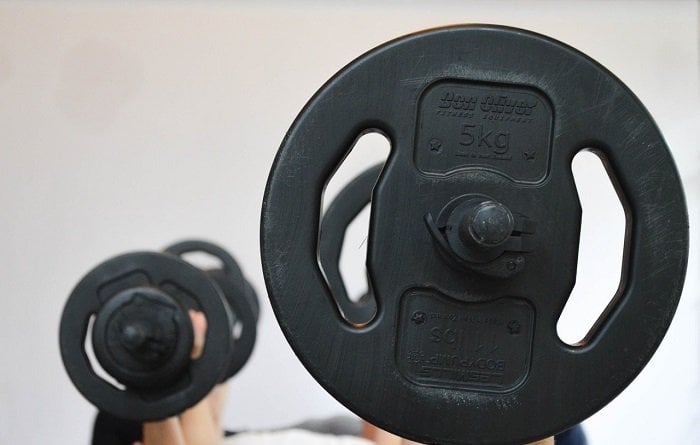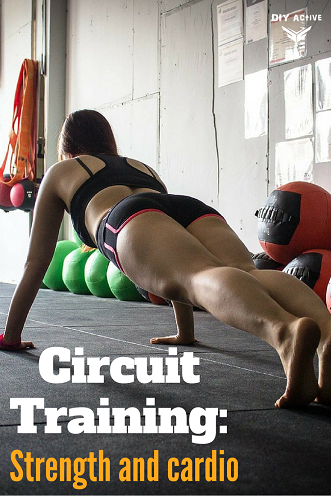
Circuits for Incredible Results
Circuit training is a time-efficient way to combine both your strength training and cardiovascular exercises into one condensed package. Scientists have even discovered the locomotor improving powers of circuit training because it works the entire body! Alternating between cardio and strength training while performing as many correct reps as possible can help you get a full-body workout in less than 50 minutes.
Circuit workout you can try today
Circuit training is a great way to combine both your resistance and cardio training at the same time! By combining both cardio and resistance exercises you can get a full-body workout in less time, and you can do it with a partner or in a group: hello motivation!
Doctors and scientists have long known that circuit training can improve muscular functionality of patients with certain muscular diseases or injuries like stroke victims (Dean et al 1999), patients with cerebral palsy (Blundell et al 2003), and paraplegics (Jacobs et al 2000), etc.
Circuits are extraordinary because they work the entire body and require strenuous use of certain muscle groups for an extended period of time, this can provide us with that “toned” look we strive for!
Circuits, when done correctly, take aspects of high-intensity interval training in their intensity and interval qualities, but combine weight training for extended periods of time. This double-edged sword can help you knock out both your cardio and weight training in 20-30 minutes.
Ideally, we want to alternate between stations of cardio and stations of weight training.
Now when I teach circuits I usually have 6 stations per session. Below you will see six cardio exercises and twelve resistance training exercises but you can certainly add any exercises you enjoy doing (for an explanation of exercises go to Bodybuilding.com):
 Cardio:
Cardio:
- Heeljacks
- Standing high knees
- Mountain climber
- Jump rope
- Jumping jack
- Burpees
Resistance training:
- Standing shoulder press with a squat
- Alternating (front, side) dumbbell deltoid raise
- Weighted Lunges
- Wall sits with continuous bicep curl
- Dips
- Pushups
- Supine dumbbell bench press
- Overhead dumbbell tricep extension
- Bent-over dumbbell tricep extension
- Bent-over dumbbell lat row
- Sitting bungee band lat row
- Bungee band curl
To set your circuit, pick three cardio and three resistance exercises and set up the circuit by alternating between the two groups. Here is what I picked (after alternating):
- Heeljacks
- Dips
- Burpees
- Overhead tricep extensions
- Mountain climbers
- Pushups
You can set the circuit up to target certain muscle groups (such as my example which is geared towards the chest and triceps) or just go for a complete body workout. The next step is to set up all your equipment beforehand so you won’t have to take time during the middle of the circuit to do it.
After stretching and warming up, begin the circuit by performing the exercise in station one for 1 minute (perform as many reps as possible while still maintaining good form) followed by “actively” resting for 30 seconds by jogging in place to keep your heart rate up.
After the 30 second rest period repeat that same station for 1 minute before moving on to the next station (don’t forget to actively rest for 30 seconds).
Complete all the stations (each one twice in a row) to finish the circuit, this should take 20-30 minutes. If time allows, set up and complete another circuit for a complete workout time of 50-60 minutes.
Wrap-Up
One last thing, don’t forget to drink plenty of fluid because circuit training can and should be quite strenuous.
For extra motivation grab a couple of friends to do circuits with, it makes it more fun and pushes you to give your all and to go for that one extra rep! Give group circuits a try!
They are challenging, fun, and time-efficient! Now go out and Be Active!
References
Blundell SW, Shepherd RB, Dean CM, Adams RD, Cahill BM (2003) Functional strength training in cerebral palsy: a pilot study of a group circuit training class for children aged 4-8 years. Clin Rehabil 17:48-57.
Dean CM, Richards CL, Malouin F (1999) Task-related circuit training improves the performance of a locomotor task in chronic stroke: a randomized, controlled pilot trial. Arch Phy Med Rehabil 81:409-417.
Jacobs PL, Nash MS, Rusinowski Jr JW (2000) Circuit training provides cardiorespiratory and strength benefits in persons with paraplegia. Med Sci Spt Ex 33:711-717.
Photo via Hannah Marie Photography
- Post-Workout Meal: Getting the Most from Your Workout - January 22, 2024
- 6 Ab Exercises To Blast Your Core - December 17, 2023
- 10 Office Exercises You Can Do To Burn Calories - November 19, 2023



